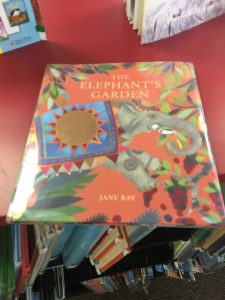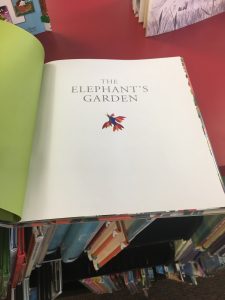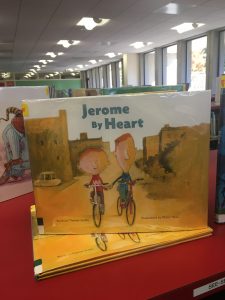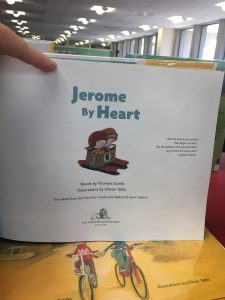Author(s), Illustrator/Photographer: by Jane Ray.
Publisher and Year Number of pages: Boxer Books, 2017, 31 Pages.
Genre: Folktale.

Descriptive Annotation: The cover features an elephant in traditional Indian coverings, brandishing a mango grown by the protagonist, Jasmine, at her home garden in India. Watercolors depict the apples, kumquats, apricots, peaches, passion fruit, and papayas in her garden, making a beautiful cornucopia of fruit that is only disturbed when somebody starts stealing the very best ones. Making an executive decision on her part, Jasmine keeps watching one night, discovering that the culprit is a large elephant whom she addresses as Mr. Elephant. When called out on this behavior, Mr. Elephant is very apologetic: “I’m very sorry, but I was hungry. And the fruit here is so delicious. Come with me and let me show you my garden” (Ray, p. 9). As it turns out, the titular elephant’s garden is full of enormous fruits that are actually giant jewels. Jasmine is given one large strawberry-shaped jewel to show her parents, and she takes it home and tells them about the garden. However, their end of the bargain is that they can’t tell anybody about it, which they do. They get lost from the elephant on the way over, and nobody ends up seeing the garden except for Jasmine in the end. However, she at least has no more of her fruits eaten by the elephant, and there is plenty of them to go around for the village. Prior knowledge of the significance of the story would help, but otherwise, kids can simply enjoy this one for what it is a fun folktale from India.
Classroom Application: In this picture book, the role of the elephant is a mystical one, depicted mostly as a creature of the night that can travel great distances in a single bound. Jasmine represents the mortal world, one which is stunned by such magical discoveries as the elephant’s garden in person. This would be ideal for some comparisons to Western and other cultures’ fairytales and folktales and seeing how they compare and have different and similar elements overall. Accompanied by a discussion on the topic, this would be an excellent idea and a way to broaden one’s knowledge of literary traditions for children in an English classroom setting. I certainly never read stories from the Brothers Grimm or Hans Christian Andersen that contained whimsical passages such as this one: “When he was full the elephant flew up into the night sky with everybody holding hands and trailing after him” (Ray, p. 24).
Linguistic and Cultural Diversity Analysis: Ray covers the legacy of Indian oral storytelling in a way that can easily be remembered, and notes the cultural significance of family and respect towards ones’ elders in Indian culture that results in the elephant’s gift of a fruit jewel to Jasmine’s mother first and foremost: “He offered Jasmine one ruby strawberry to show her mom, and they flew back home” (Ray, p. 17). The author understands Indian culture and gives the characters culturally sensitive names such as Bakool and Kali. Such a bevy of names that may be new for many students would warrant a discussion regarding how different names look in different cultures and encourage cross-cultural exchanges of what names from different backgrounds mean and encourage tolerance of those differences.



